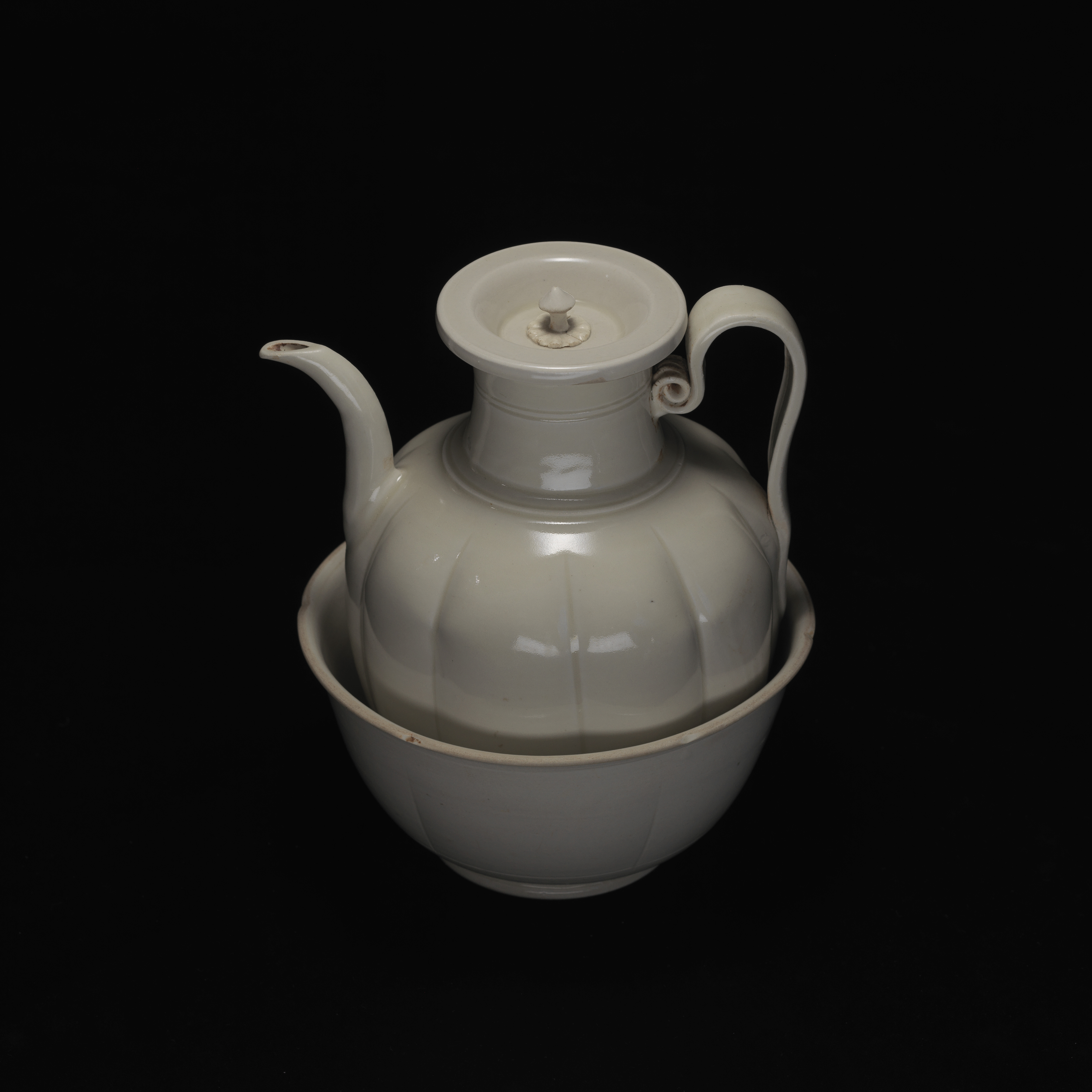A White-glazed DING Lobed Ewer and a Bowl (as a set)
Northern Song Dynasty

- KILN:DING Kiln
- PERIOD:Northern Song Dynasty
- EWER DIMENSIONS:Height 22.7 cm, Rim Diameter 7.5 cm, Ampulla Diameter 16 cm, Foot Diameter 8.9 cm
- BOWL DIMENSIONS:Rim Diameter 18.4 cm, Foot Diameter 9.3 cm
Introduction
The ewer and the bowl come in a set. The lid is decorated with an everted edge, and caved in the centre with a knob sitting within. Below the lid is moulded with an everted ring foot joint to attach to the ewer’s opening. The ewer has a flared mouth, and a tightened neck carved with two horizontal embossed rings and double-layered short base at the bottom; its ten-lobed belly appears as a vivid standing melon, with round shoulder, a flat bottom and a foot ring. A curved spout is attached to the shoulder; and a curved strip-handle is pasted to the neck and the shoulder. The bowl is with a flared opening and a sloping wall, a round bottom supported on a slightly splayed foot ring; it’s built in a six-lobed flower shape, with a coarse rim, deep and fuller body. The two wares are all covered in white glaze, leaving the bottom and the foot ring exposed; the unglazed rim is the result of the unique inverted piling method while being baked in the kiln.
The ewer, also known as“pitcher”,“pouring pot”, was seen among celadon wares early in the Southern and Northern Dynasties; then later, appeared in gold and silver wares in the Sui and Tang Dynasties. From the Five Dynasties to the Northern Song Dynasty, the ewer commonly came with a bowl (to maintain the temperature of the liquid in the ewer), also known as“pitcher’s bowl”. According to the Examples and Criterions of Architecture written in the Chongning Period, Northern Song Dynasty, “the pitcher, 7 inches high, if extended by 1 inch, the diameter shall be added by 7 fen (built separately); and Its long neck takes up 3/10 height; the bowl, is 6 inches in diameter, if extended by 1 inch, the height shall be added by 8 fen. ”


